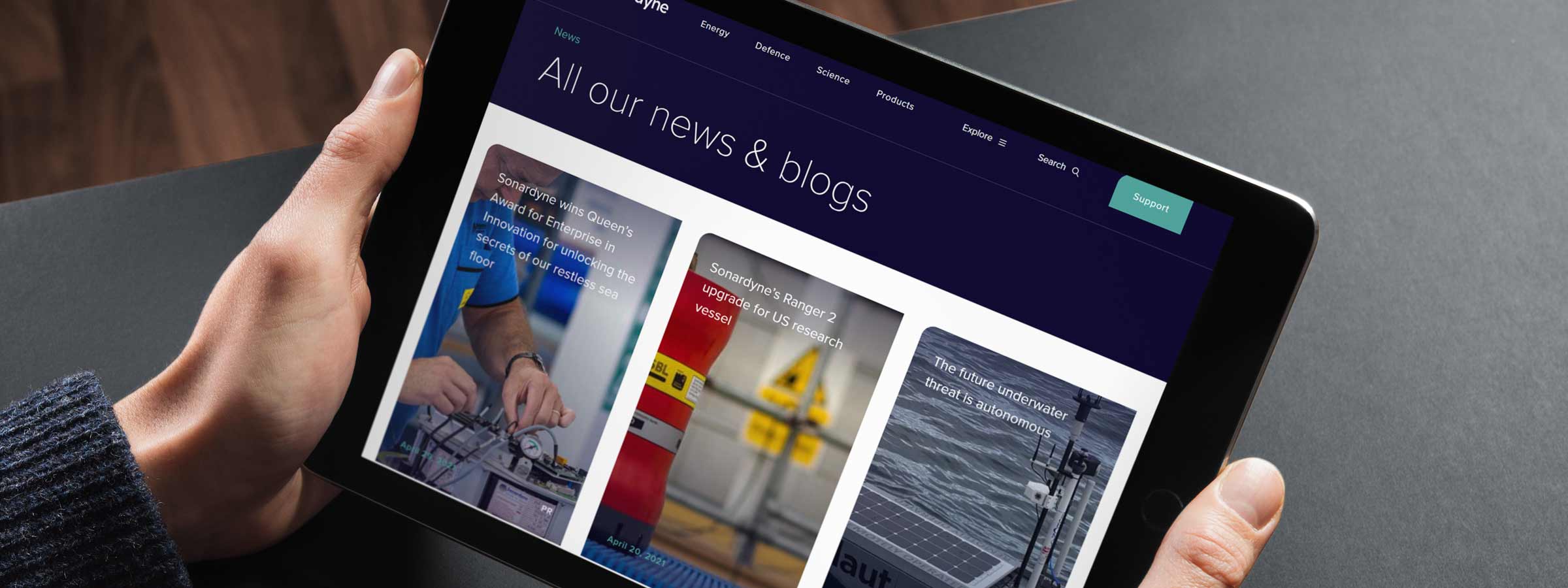Sonardyne Inc., Houston, today announced it has supplied acoustically-aided inertial navigation technology to offshore engineering, procurement, construction and installation company, McDermott International, Inc., for its Lay Vessel 108 (LV 108).
The Ranger 2 Pro DP-INS system, the highest specification available from Sonardyne, is being used to support touchdown monitoring surveys of submarine cables, umbilicals and pipelines and as an independent position reference for the LV 108’s Kongsberg dynamic positioning (DP) system. McDermott’s LV 108 entered service in 2015 and is currently on contract in the Ichthys field, Western Australia.
Designed as a fast-transit, dynamically positioned (DP 2) vessel for subsea constructions support across a wide variety of water depths, the LV 108 has 21,528 sq ft of deck space and can accommodate a crew of 129. Dynamically positioned construction and installation vessels such as the LV 108, conventionally rely on Ultra-Short BaseLine (USBL) acoustics and the Global Navigation Satellite System (GNSS) as their primary sources of position reference data. However, a vessel’s station-keeping capability can be compromised in the event the USBL is affected by thruster aeration and noise and the GNSS signal is simultaneously interrupted. The latter is particularly common around equatorial regions and during periods of high solar radiation.
Sonardyne’s Ranger 2 Pro DP-INS system addresses this operational vulnerability. It aids vessel positioning by exploiting the long-term accuracy of Sonardyne’s Wideband 2 acoustic signal technology with high-integrity, high-update rate inertial measurements. The resulting navigation output has the ability to ride-through short-term acoustic disruptions and is completely independent from GNSS. In addition to the system’s deep water positioning performance and safety benefits, DP-INS has been proven to deliver valuable time and cost savings for vessel owners. It does not need a full seabed array of transponders to be installed and calibrated before subsea operations can commence. For most subsea tasks, positioning specifications can be met with only one or two transponders deployed on the seabed. Additionally, as the system needs only occasional aiding from the acoustics, transponder battery life is substantially increased and the need to task an ROV to deploy and recover transponders for servicing is reduced.
The equipment supplied to McDermott for the LV 108 included Sonardyne’s INS sensor co-located with the company’s sixth generation (6G) HPT acoustic transceiver. This hardware was installed on one of the vessel’s two Kongsberg through-hull deployment machines and interfaced directly with the vessel’s DP system, also supplied by Kongsberg.
[blockquote author=” Jason Peters, Global Survey Manager at McDermott “]”The decision to equip the LV 108 with Sonardyne’s DP-INS reflects our approach to fleet expansion and renewal. This strategy focuses on ensuring our vessels and acquisitions keep abreast of the industry’s growing demand for safe, efficient, cost-effective installation solutions for field developments across all water depths.”[/blockquote]
[blockquote author=” Ralph Gall, Technical Sales Manager at Sonardyne in Houston”]”DP-INS is a mature, field proven technology that addresses industry’s need for a third, independent DP reference. The LV 108 joins a significant fleet of vessels that now depend upon our acoustic inertial technology for safer and more efficient dynamic positioning operations.”[/blockquote]
For more information on Ranger 2 Pro DP-INS please click here.
